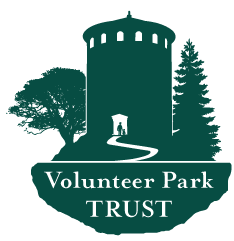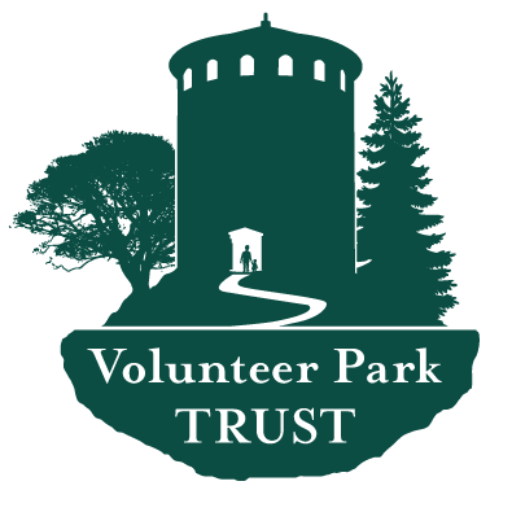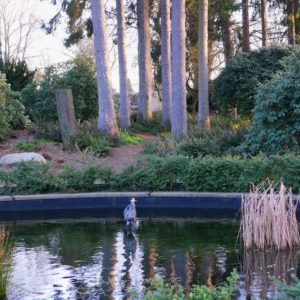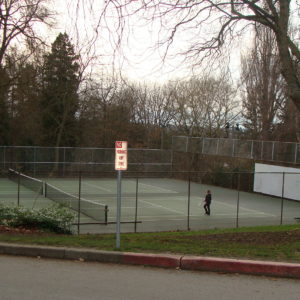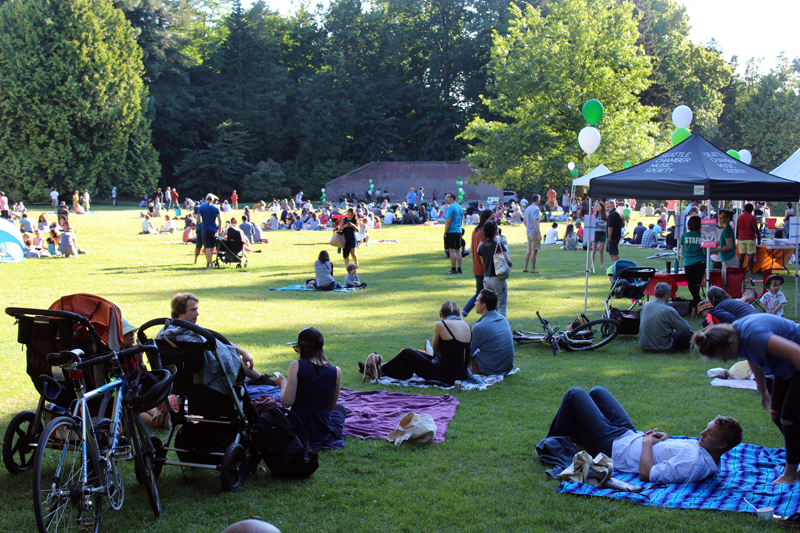
The lawn to the west of the concourse has been altered since the park was originally developed. The thick grove of trees that bisects the lawn have been planted over the years for a variety of reasons. Click play to learn more about the history of the Great Lawn.
Learn about the Great Lawn
Great Lawn
When Olmsted designed Volunteer Park, he placed organized activities — things like playgrounds, a concert grove, and the conservatory — at the north end of the park and beside the main drive, or concourse, along the top of the ridge. In the rest of the park, he laid out vast, sweeping lawns, fringed with planting beds. He called for trees, tall shrubs, and low plants in those planting beds so they would enclose the lawns. The lawn to the west of the concourse has been altered since the park was originally developed. The thick grove of trees that bisects the lawn have been planted over the years for a variety of reasons. Also, the Amphitheater, which can be seen at the far end of the lawn, was built in 1971 and the lawn was regraded to create a bowl for seating.
The lawns provide a respite from the urban environment. They also create space for gatherings and recreation. On a sunny day, this lawn is full of picnickers, people playing Frisbee, and people walking their dogs.
Elsewhere in the Park
Lily Ponds
Two lily ponds flank the terrace along the west side of the Concourse.
Tennis Courts
John Charles Olmsted characterized Volunteer Park as a landscape park. This meant that it was primarily designed for people to enjoy the landscape. So how did the tennis courts come to be?
